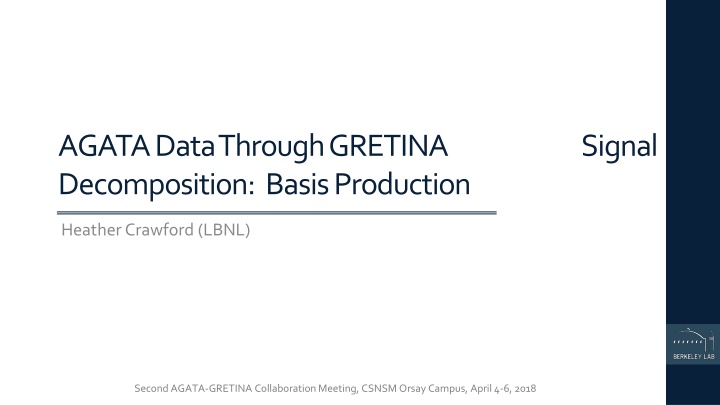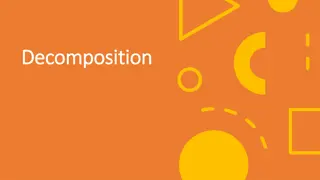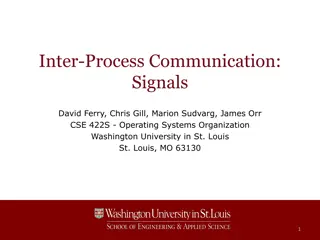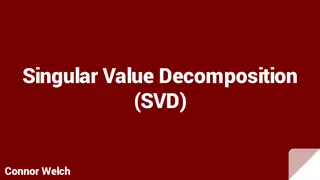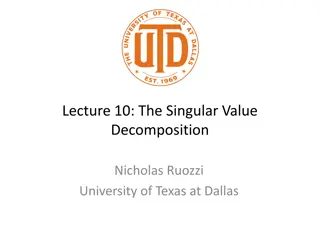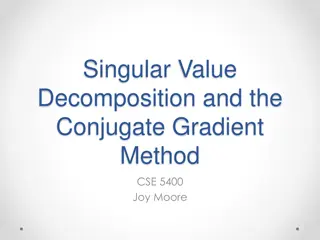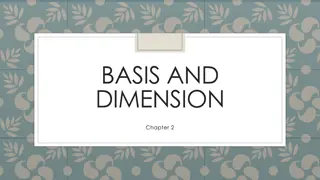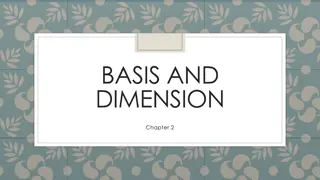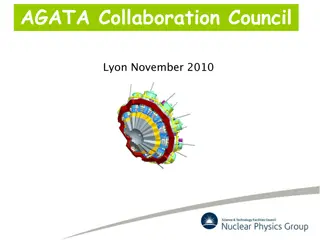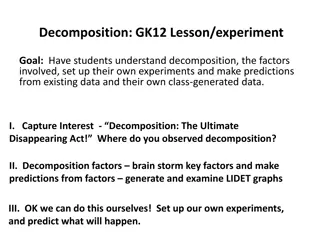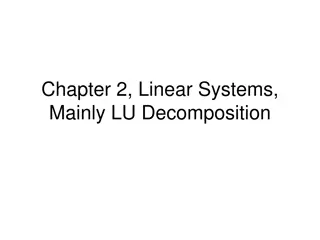Basis Production Procedure for AGATA through GRETINA Signal Decomposition
This presentation outlines the detailed procedure for generating basis signals in the context of AGATA data processed through GRETINA signal decomposition. It covers the generation of pristine basis signals, superpulse analysis, and the creation of cross-talk corrected basis files. The process involves defining inputs, generating crystal geometries, calculating electric fields and weighting potentials, producing grid and basis signals, and simulating superpulses. Ultimately, the procedure results in a refined basis file for further analysis and experimentation.
Download Presentation

Please find below an Image/Link to download the presentation.
The content on the website is provided AS IS for your information and personal use only. It may not be sold, licensed, or shared on other websites without obtaining consent from the author.If you encounter any issues during the download, it is possible that the publisher has removed the file from their server.
You are allowed to download the files provided on this website for personal or commercial use, subject to the condition that they are used lawfully. All files are the property of their respective owners.
The content on the website is provided AS IS for your information and personal use only. It may not be sold, licensed, or shared on other websites without obtaining consent from the author.
E N D
Presentation Transcript
AGATA Data Through GRETINA Signal Decomposition: Basis Production Heather Crawford (LBNL) Second AGATA-GRETINA Collaboration Meeting, CSNSM Orsay Campus, April 4-6, 2018
Outline Basis Generation Procedure Defining the inputs Pristine basis generation Superpulse analysis Cross-talk corrected basis An AGATA Basis in the GRETINA world
GRETINA Basis Recipe Find crystal inputs; Calculate fields and crystal weighting potentials; Generate a grid and basis signals; Generate a raw (pristine) basis; Produce a simulated superpulse (SP) using the raw signal basis; Collect data for an experimental SP; Build an experimental SP from the data; Fit simulated SP against experimental SP to determine cross-talk parameters; Generate a cross-talk corrected basis file.
Inputs for Pristine Basis Generation Crystal geometry front face corners, taper angle, crystal length and rear diameter, bore hole diameter, distance to bore hole Outer segmentation boundaries (along z) Depletion and bias voltages Impurity concentrations (front and back)
Fields and Weighting Potentials 3D electric field vector is calculated on a regular grid (with user defined spacing), as are weighting potentials for each segment
Grid and Basis Signals An irregular sensitivity-based grid is calculated across the crystal Based on the previous calculated weighting potentials and fields, a pristine basis signal is produced for each grid point
Simulated Superpulse Generation UCGretina GEANT4 simulation was used to simulate a 60Co source located at the center of the array Simulation data are pre-sorted to identify likely single- segment events (all interaction points within phi range and depth range) Candidate events are evaluated by calculation of full signal for each interaction point if it is single segment, waveforms for total event are saved Average is made over all qualifying events simulation includes at least 1000 events in rear segments
Simulated Superpulse Generation Average signals, accounting only for induced signals, without any electronic shaping, or any cross-talk By using GEANT4 distribution of points, selects an average weighted by physics distribution of 1332 keV events
Experimental Superpulse A flood-field measurement (at the target position, or to match simulation) is taken Single-segment events are selected for which the CC and net segment see 1332keV (+/- 2keV) All satisfying events for each segment are averaged -----> Same criteria for event selection as the simulation
Superpulse Fit Apply a response correction to the simulated superpulse data to optimize fit to experimental superpulse Preamplifier shaping; time delays; integral and differential cross-talk Total of 669 parameters: 72 delay parameters; 39 time constants; 216 IXT and 342 DXT Overall 2 minimization
Cross-talk Corrected Basis Apply the response correction with the fit parameters to all signals in the pristine basis to generate the cross- talk corrected basis for use in signal decomposition
GRETINA vs. AGATA Changes needed? Geometry modified to AGATA geometry for A, B and C-type crystals Impurity data etc. for 02A, 02B and 02C New simulation for AGATA in UCGretina package (GEANT4) Updates to subsequent codes due to format change (relatively) Straight-forward procedure
Superpulse Fitting Results Most informative is last step of fitting pristine basis against data, and extracting parameters
Superpulse Fitting Results Visually, differential cross-talk is much less for AGATA signals
Superpulse Fitting Results DXT and IXT parameters for AGATA and GRETINA fits however are similar
Superpulse Fitting Results DXT and IXT parameters for AGATA and GRETINA fits however are similar Delay parameters are comparable Tau parameters are very different AGATA consistently pushes segment tau to low, or even negative values AGATA 2 also not great approximately 20 for both A and B crystals (compare to GRETINA at 4-8 Updating fit code to allow constraint of parameters more easily explore range of fits for AGATA crystals
Summary Mechanics are in place to produce AGATA basis through the GRETINA tool chain First basis shows unexpected parameter set given visual inspection Possibly higher statistics experimental SP, and options to constrain fit parameters will improve work in progress!
